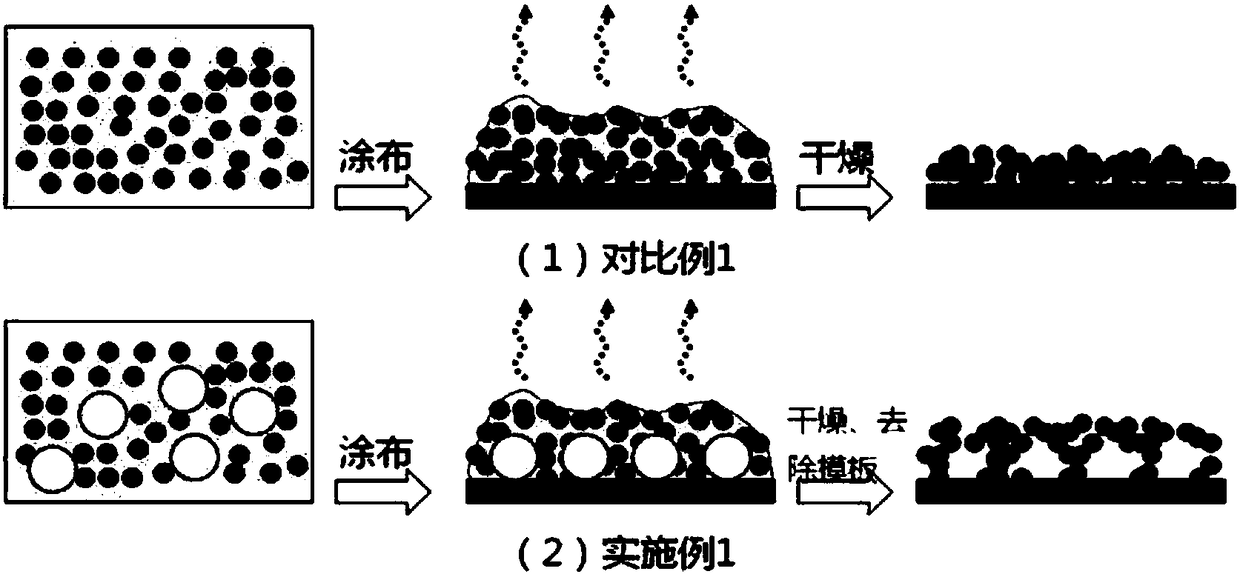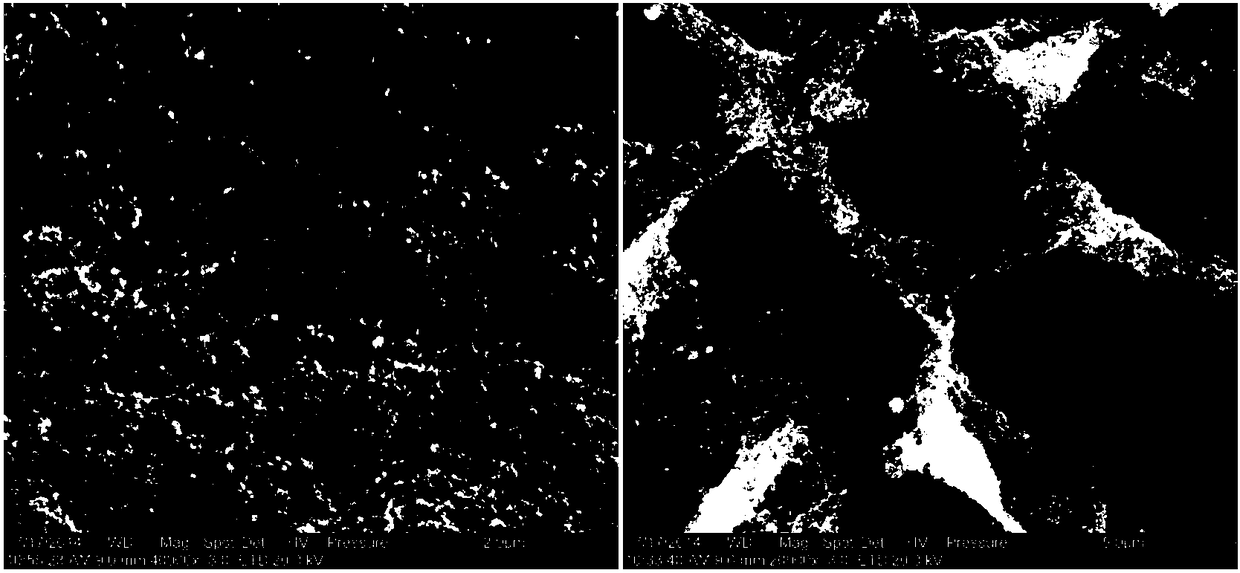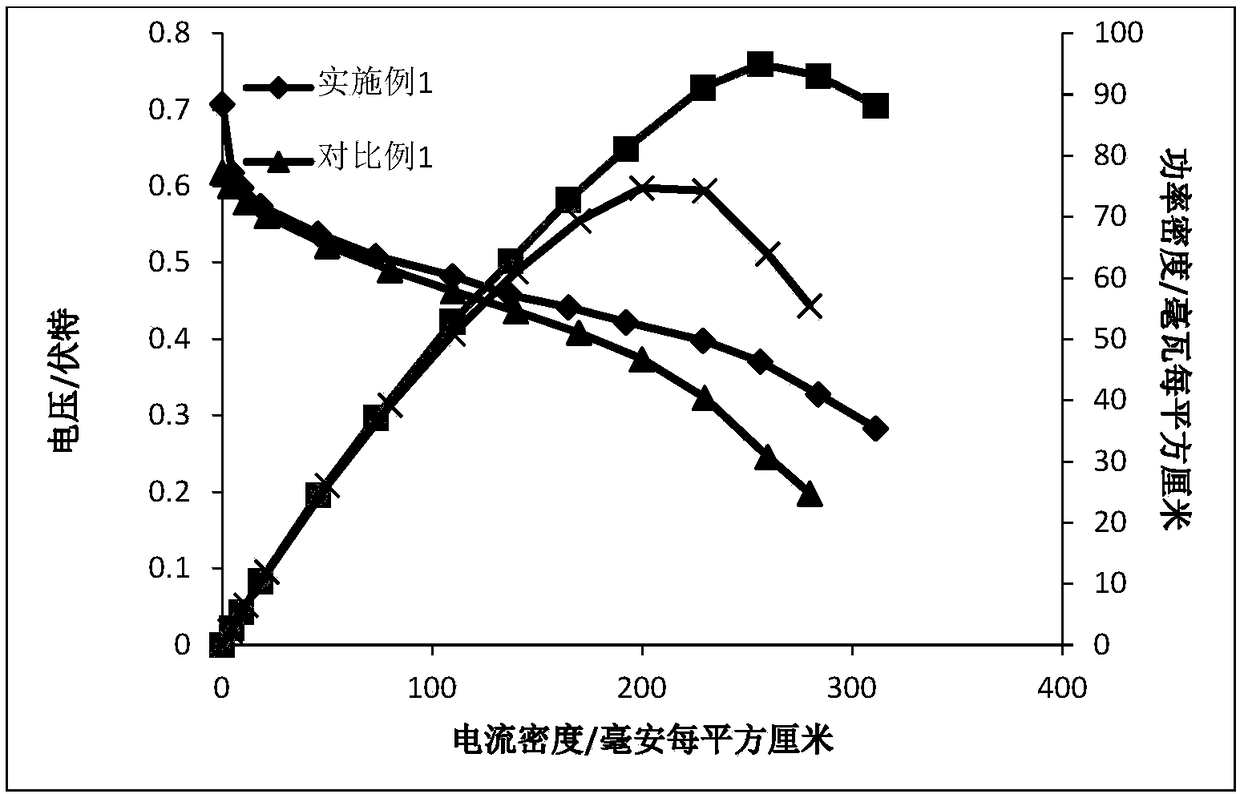Porous electrode and preparation and application thereof
A porous electrode and multi-level pore technology, applied in the direction of battery electrodes, circuits, electrical components, etc., can solve problems such as difficult to achieve electrode performance, difficult to achieve in-depth research on electrode performance, uncontrollable porosity, pore size and channel shape, etc. Achieve the effect of reducing uncontrollable factors, increasing porosity and high utilization rate
- Summary
- Abstract
- Description
- Claims
- Application Information
AI Technical Summary
Problems solved by technology
Method used
Image
Examples
Embodiment 1
[0031] a. Preparation of electrode slurry
[0032] Take a certain mass of 60% Pt / C catalyst material, add 5 times of deionized water, 20 times of absolute ethanol, and 5% perfluorosulfonic acid polyion isopropanol solution (accounting for 20% of the mass fraction of the catalytic layer) in order. %), ultrasonically dispersed for 30min. Subsequently, polystyrene template beads with an average particle diameter of 2 μm were added, accounting for 50% of the mass fraction of the catalytic layer, and dispersed evenly by ultrasonication for 30 minutes.
[0033] b. Preparation of Porous Electrode
[0034] The above slurry is coated on the gas diffusion layer substrate by blade coating, and then dried by natural air drying.
[0035] The above dried sample was immersed in acetone solution for 2 hours to remove the template, and then rinsed with deionized water and dried to obtain the prepared porous electrode.
Embodiment 2
[0042] a. Preparation of electrode slurry
[0043] Take a certain mass of PtCo catalyst material, add 10 times of deionized water, 10 times of absolute ethanol, and 5% perfluorosulfonic acid polyion isopropanol solution (accounting for 50% of the mass fraction of the catalytic layer) in order, and ultrasonically 30 minutes to disperse evenly. Then polysilicon template beads with an average particle size of 1 μm were added, accounting for 50% of the mass fraction of the catalytic layer, and dispersed evenly by ultrasonication for 30 minutes.
[0044] b. Preparation of Porous Electrode
[0045] The above slurry is coated on the electrolyte membrane substrate by spraying, and then dried by vacuum drying or the like.
[0046] The above samples were immersed in 0.1M hydrofluoric acid solution for 5 hours to remove the template, then rinsed with deionized water and dried to obtain the prepared porous electrode.
Embodiment 3
[0048] a. Preparation of electrode slurry
[0049] Take by weighing a certain mass of 60% Pd / C catalyst material, add 10 times of deionized water, 20 times of absolute ethanol, 5% perfluorosulfonic acid polyion isopropanol solution (accounting for 40% of the mass fraction of the catalytic layer) in order. %), ultrasonically dispersed for 30min. Then, iron ferric oxide template pellets with an average particle size of 0.5 μ were added, accounting for 70% of the mass fraction of the catalytic layer, and dispersed evenly by ultrasonication for 30 minutes.
[0050] b. Preparation of Porous Electrode
[0051] The above-mentioned slurry is coated on substrates such as aluminum foil by spraying, and then dried by heating.
[0052] The above samples were immersed in 1M dilute sulfuric acid solution for 5 hours to remove the template, then rinsed with deionized water and dried to obtain the prepared porous electrode.
PUM
| Property | Measurement | Unit |
|---|---|---|
| Diameter | aaaaa | aaaaa |
Abstract
Description
Claims
Application Information
 Login to View More
Login to View More - R&D
- Intellectual Property
- Life Sciences
- Materials
- Tech Scout
- Unparalleled Data Quality
- Higher Quality Content
- 60% Fewer Hallucinations
Browse by: Latest US Patents, China's latest patents, Technical Efficacy Thesaurus, Application Domain, Technology Topic, Popular Technical Reports.
© 2025 PatSnap. All rights reserved.Legal|Privacy policy|Modern Slavery Act Transparency Statement|Sitemap|About US| Contact US: help@patsnap.com



